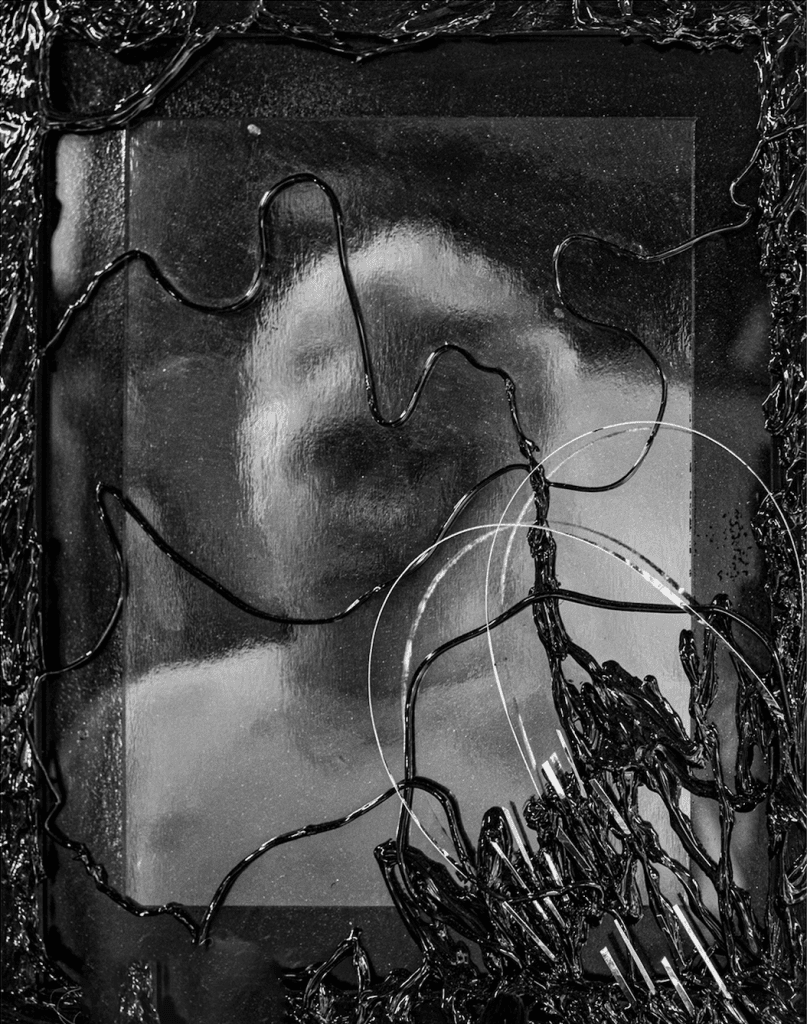Opening: 25 July, 18:00–21:00
Dates: 26 July–8 September 2024
Address: Kim? Contemporary Art Centre, Sporta 2, Riga
Curated by Zane Onckule
drowned in thought
lost in thought
gazing into infinity
possibly asleep
or reading a book
in silence
in solitude
there is a noise
somewhere
something
fell
I thought
knowing
I will never
learn
what it
was
R.Š.
The motif of Rūdolfs Štamers’ first personal exhibition at Kim? Contemporary Art Centre is an immersive and manipulative experience that affects the senses, including hearing, smell and spatial orientation.
By weaving together references to such personally experienced emotional qualities as desires, feelings, urges and longings, Somewhere Something Fell Down serves as a framework for playing out imaginary mental scenarios and absurd story-situations. Represented in several scenographic segments, divided into separate zones, the exhibition’s conceptual vocabulary uncovers the artist’s thought trajectories and mental states, related to reflections on the destabilizing effects of different external sources of irritation and the necessity to tame the chaos they create.
In the context of the exhibition, what is deeply subjective and personally relevant for the artist becomes a generalized visualization of the boundary between reality and the world of dreams. In reference to an experience vividly impressed in the memory, his first black-and-white nightmare, Štamers’ circulation of obsessive thoughts has given birth to an installation that literally illustrates the ground being pulled from under one’s feet. That dream, whether a nightmare or not, whether black-and-white or not, must be seen as due to a deficiency of sleep, as due to the impurities in blood circulation, without proportion and rationality, without truth and clarity. Striving for balance is like waking up from a dream, a return to actual truth governed by presence, consciousness and an at least apparent sense of control over events. Although this does not happen all at once. With the vestibular system attempting to adapt at all costs, the spectral range of yellow light in the space causes a neurological, colour-suppressing reaction, seemingly leading back into the nightmare and making everything visible appear monochrome.
A series of new works created specially for this exhibition, as well as works exhibited previously and elsewhere, integrate industrial, worn, robust, and sometimes toxic or otherwise “unremarkable” materials into a broad spectrum of textures and surfaces, characteristic of Štamers’ visual style. Meanwhile, maintaining a colour palette devoid of cheerful primary-colour hues, his planar and sculptural works in various formats are dominated by black, with different variations in the direction of heavy metals – silver, chrome. Borrowed from subcultures, this glorification of dark tones serves here as a nod towards the practice of an indeterminate and non-religious mysticism within which déjà vu and jamais vu rage on the path from darkness to light.
Yet everything that moves, moves without will. All agility, concentration and intent is contrary to lightness. Practice something a thousand times, and it becomes difficult; thousands of thousands of times, and it becomes easy; thousands of thousands of thousands of times, and it is no longer you doing it, but it doing itself through you. Only then is what is done, done well.
The unshakeable pull of authorship and creation is present in works made in a variety of media evoking the “mirror of the soul”, which, having assumed the contours of Štamers’ eye, gaze judgmentally and critically. Consciousness can be a hindrance, and the mind can be a traitor, yet it is precisely this union that gives birth to that which we call the “I”. Despite occasionally being unclear, mysterious and indeterminate, through practice, the contents of consciousness become light. Dark unreason turns into an experience succeeded by the final room of Somewhere Something Fell Down.
Isolated, concealed, calm and light, it is open to emptiness and intervals, freed from the insanity, alarm and anxiety behind the wall. Intentionally deformed and painted shards and splinters of Perspex have been “scrambled” and assembled here in arrangements of new works – the result of a long meditative process, subject to the impulse of producing visually appealing works. In a manner pertinent to Štamers, who strives to bring more freedom to his processual art and easily operate with the elements available to him, the aroma wafting in the air, hidden yet familiar to everyone in the art scene, can be read as an ironic “shaking off” of contrived seriousness. Like the breath from a boujee crowd, which pushes back into that reality where the act of art and creation is inseparably tied to the propensity for achievements measurable in money, status and other terms.
Somewhere something fell down. We don’t know what it was or where. The universe as a practical joke in which, not without fear or coincidence, we create our own selves and our own image. As the mental state of obsessive thoughts, Somewhere Something Fell Down.
Artist’s acknowledgements: Matīss Eduards Āboltiņš, Tuukka Laurila and Benjamin Pöntinen, Elīza Elizabete Ramza, Filips Smits.
Rūdolfs Štamers (b. 1995) is a Latvian artist living and working in Paris. Štamers graduated from the Department of Visual Communication at the Art Academy of Latvia and earned an MA from the Royal Academy of Fine Arts Antwerp. His most recent personal exhibitions are Voices in My Heads, TUR telpa, Riga (2023); Metamorphoses, New Garden Gallerie, Paris (2022); Tur kaut kam ir jābūt, Tu Jau Zini Kur, Riga (2020); and selected group exhibitions include Lucky Charms, Ballroom Gallery, Brussels (2022); PILOT LMA x Art Vilnius’21, Kuldīga Art House, Kuldīga (2022); Surrender, PILOT gallery, Riga (2021); gallery PILOT booth at the art fair Art Vilnius, Vilnius (2021); and MASTERS EXPO, Royal Academy of Fine Arts Antwerp (2020). Since 2017, Štamers has curated several group exhibitions at galleries and artist-run spaces in Latvia and abroad. He established the art space New Garden Gallerie in Paris and TUR telpa in Riga.
Supporters:
Ministry of Culture, State Culture Capital Foundation, Riga City Council, Absolut, Valmiermuiža, KRASO
